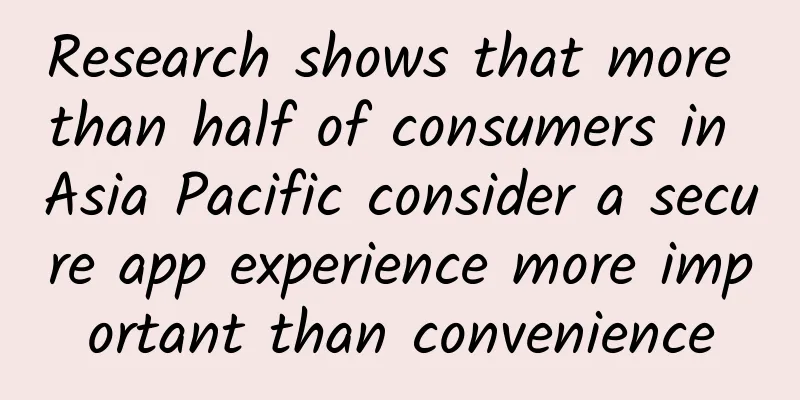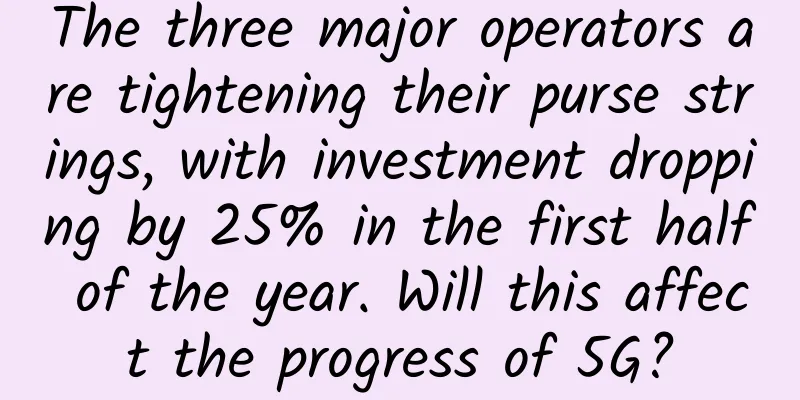Research shows that more than half of consumers in Asia Pacific consider a secure app experience more important than convenience

|
Today’s consumers are willing to sacrifice application convenience for security, according to a study commissioned by F5 Networks (NASDAQ:FFIV) titled “The Convenience Curve — Security vs. Convenience” [To hyperlink to report/eBook/gated asset]. According to the regional study, conducted in conjunction with YouGov, consumers in Asia Pacific consider a secure app experience to be the most important, with 53% of respondents ranking security ahead of functionality and convenience. In addition, consumers in Asia Pacific have a zero-tolerance attitude towards security, with nearly three in five respondents choosing to abandon an app entirely if their data security is compromised.
From driving consumer market growth to delivering innovative business models, Asia has become a key force in shaping the global digital economy. To understand the application usage perceptions and attitudes of consumers in the Asia-Pacific region, F5 and YouGov conducted a survey of 3,700 respondents from Australia, Mainland China, Hong Kong, India, Indonesia, the Philippines and Singapore. “Today’s apps provide a unique and personalized environment for businesses to interact with their users, thereby changing the way consumers interact with products and services,” said Adam Judd, senior vice president of China, Japan and Asia Pacific at F5 Networks. “As our research shows, security remains the top concern for APAC consumers, a key fact that cannot be obscured by the region’s diversity. As apps continue to dominate the APAC landscape, businesses must understand where their customers are on the convenience curve in order to deliver the right user experience or risk losing them.” “Security and convenience are a trade-off, and finding the right balance is a challenge,” said Dr. Debin Gao, Associate Professor of Information Systems at Singapore Management University. “The more convenient a device or app is to use, the less secure it may be. This creates a dilemma: should you sacrifice security or convenience? The answer to this question can be found in the F5 Convenience Curve, where respondents in the region have different preferences at different stages. It is important to note that while application usage is growing, users can only have a limited number of applications. Enterprises must understand what users care about most and take these factors into account when designing applications.” Users cannot resist the temptation of convenience Security is top of mind for consumers in Asia Pacific across all digital activities, as evidenced by the fact that 53% of respondents ranked it higher than convenience. In fact, nearly half (46%) of respondents said greater security is the most important factor in improving digital experiences over the next five years. However, despite the potential for illegal use of personal data and vulnerability to attacks, social networks remain the most frequently used application type and, more worryingly, the second most trusted application type in the region. This is due to the practicality and convenience of social networks – not only do they allow users to easily get the latest updates from friends and family, but they also provide single sign-on (SSO) options for a variety of other applications, including mobile games and e-commerce sites. This suggests that users are willing to give up the security of their personal information in exchange for convenience and practicality, but they do not think twice about the security risks of these actions. Application expectations vary across markets While our research shows that users overall prefer security over convenience, there are differences in specific regions, just as “no two leaves in the world are exactly the same.” In emerging economies that are “mobile first,” most users’ first digital experience is through mobile devices, and this enthusiasm and excitement translates into a mindset that prioritizes experience over security. In emerging markets where digital technology is rapidly being adopted, such as Indonesia, India and the Philippines, consumers prioritize convenience, while consumers in developed markets such as Australia and Singapore prioritize safety. In fact, in more digitally mature countries, the proportion of users who prioritize safety over convenience is higher, such as 63% in Australia and 67% in Singapore. In contrast, the proportion of users who prioritize convenience over safety is 14% higher in Indonesia, India and the Philippines. Millennials seek convenience over security By 2020, more than 60% of the world's millennials (18-34 years old) will be from the Asia-Pacific region. [ https://newsroom.accenture.com/news/retailers-and-consumer-packaged-goods-companies-must-enhance-their-understanding-of-millennial-consumers-to-capture-share-of-6trillion-wallet-in-asia-accenture-warns.htm ] They will eventually become the core force influencing the application business, and their preferences will become the vane for enterprise application design. Despite growing up surrounded by technology, Millennials may be the perfect target for attackers because these digital generations take security for granted. According to the study, less than half (44%) of Millennials consider security a top priority, compared to 53% of Generation X (ages 35–54) and 69% of Baby Boomers (ages 55 and older). While Millennials are generally more sensitive to potential data security risks, they are less likely to take them seriously. 32% of Millennials will continue to use an app when data security has been compromised, showing a higher tolerance for data breaches. As future leaders, Millennials should understand the level of security risk they face, as their lax attitude toward security can only do more harm than good and become a major cause of security breaches. Nowadays, applications have become the face of many companies. The convenience curve reflects the user's understanding of applications. During this period, users will gradually understand the seesaw relationship between application security and convenience, and learn how to balance and make trade-offs. The challenge facing enterprises today is to strike a balance between convenience and security, while avoiding the "convenience trap" that causes users to be dissatisfied with neither convenience nor security. |
<<: 5G is coming, but the three major operators are playing "Three Kingdoms"
>>: What is edge computing and how will it impact businesses?
Recommend
How much money has 5G burned? The accounts of the three major operators are all here
In 2020, the country's top leadership has cla...
Maxthon Host: Germany CU2 low latency large bandwidth 20% off, 2GB memory package monthly payment 60 yuan
Maxthon Hosting has been very low-key for a long ...
Cloud, network and security integration builds the foundation for digital transformation
On September 27, the 2021 China International Inf...
[Restock] Bricklayer Los Angeles CN2 GIA (DC6/DC9)/Japan Softbank special price $46.6/year
Bandwagonhost has restocked the special annual pa...
Omdia: Traditional PON equipment vendors face three major challengers
Recently, Julie Kunstler, senior analyst at Omdia...
"Disruption" or "Pie in the sky", what is the charm of OpenRAN?
OpenRAN (Open Radio Access Network) seems to be v...
iWebFusion: Starting from $7/month - 4GB/20GB/1.5TB@1Gbps/5 data centers including Los Angeles and North Carolina
We have just shared information about iWebFusion&...
What is the environmental impact of 5G and how will it impact the world?
In recent years, commercial real estate owners ha...
JuHost: Hong Kong Kowloon VPS 40% off from $2.99/month, 1G memory, 20G SSD, 100M bandwidth
JuHost has currently updated the regular 40% disc...
Why TCP/IP is a threat to the Internet of Things
This article is reproduced from the WeChat public...
Chip shortages, edge computing and IoT will drive IT transformation in 2022
Forrester Research pointed out in its research th...
With 5G commercial licenses issued ahead of schedule, how should we respond to the challenges that follow?
On the eve of the Dragon Boat Festival, the Minis...
A Preliminary Study on Kubernetes Network Concepts
Kubernetes network is a core concept in Kubernete...
Are 5G signals still classified into different levels? Now it depends on how the operators deal with it
5G has been officially put into commercial use. R...
Kafka message sending thread and network communication
[[420379]] Let’s review the message sending seque...








![[5.1]BGPTO: Japan server $64/month, E3-1230v3/16GB/480G SSD/20M Softbank line](/upload/images/67cabed27700f.webp)
